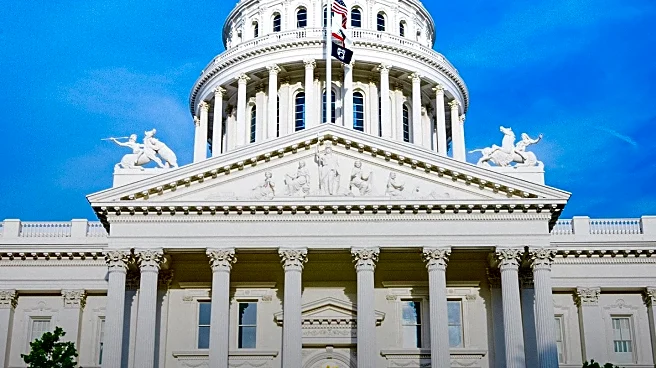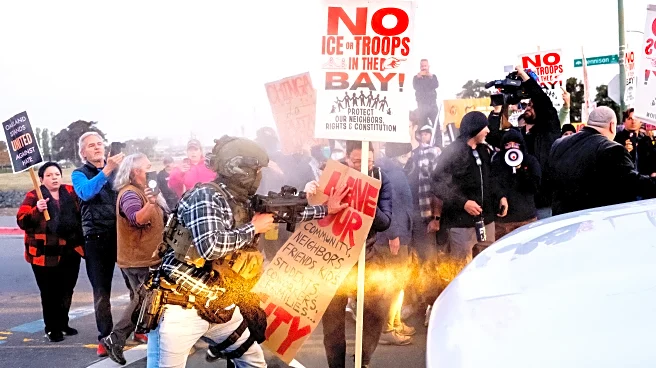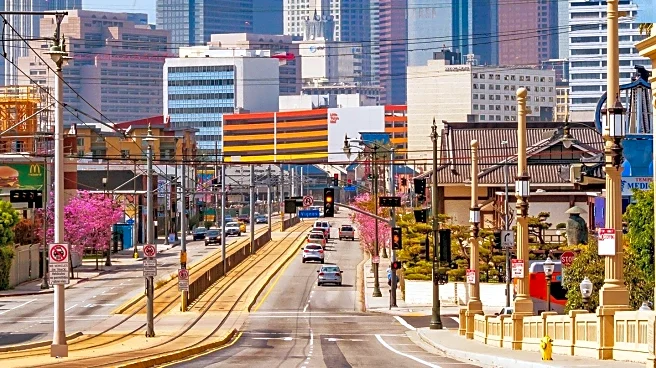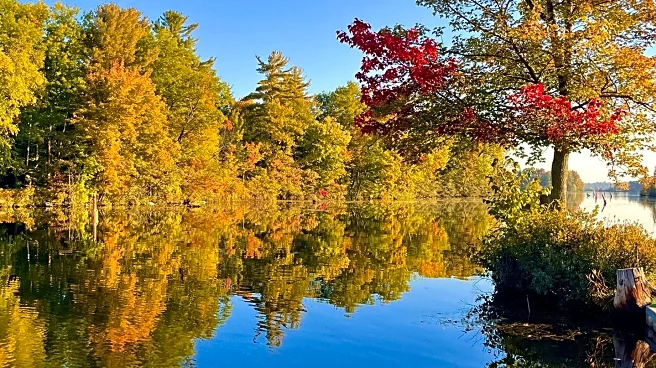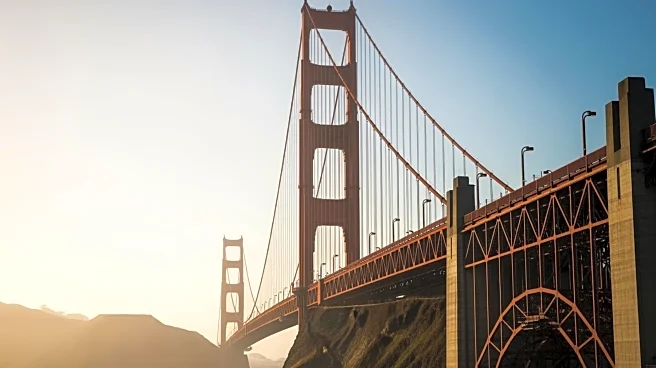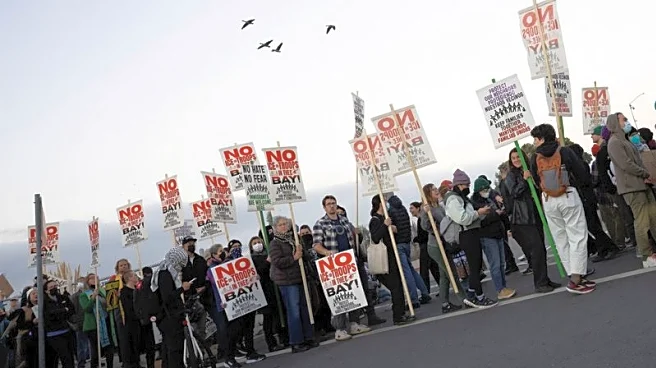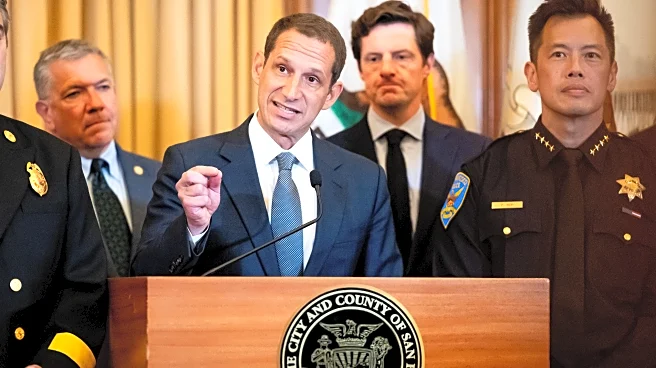What's Happening?
Colma, California, known as the 'City of Souls,' is a unique necropolis where the dead outnumber the living by a thousand to one. Established in the early 1900s after San Francisco banned new burials, Colma became the final resting place for many relocated
bodies. The town is home to 1.6 million souls in 17 cemeteries, including famous figures like Joe DiMaggio and Wyatt Earp. Despite its eerie reputation, Colma's living residents embrace the motto, 'It's great to be alive in Colma,' and continue to serve the cemeteries through businesses like monument making and taverns. The city balances its historical reverence with modern life, hosting events like trick-or-treating and film screenings in cemeteries.
Why It's Important?
Colma's existence highlights the challenges urban areas face in managing space for the deceased. As cities grow, the need for land often leads to the relocation of cemeteries, impacting historical preservation and cultural practices. Colma serves as a reminder of the importance of respecting the dead while accommodating the living. The town's unique demographic composition also offers insights into how communities can thrive economically by serving niche markets, such as cemetery services and tourism. Colma's approach to balancing reverence for the dead with community activities provides a model for other cities facing similar challenges.
What's Next?
Colma continues to evolve, with its cemeteries serving as peaceful islands amidst the bustling Bay Area. The town's historical significance and unique character attract tourists and historians alike, ensuring its continued relevance. As cremation becomes more popular, Colma's cemeteries adapt to changing burial practices, maintaining their role as a vital part of the community. The city also faces ongoing challenges in balancing Halloween festivities with respect for its cemeteries, striving to maintain a respectful atmosphere while embracing its unique identity.
Beyond the Headlines
Colma's story raises ethical questions about how societies honor their dead and manage historical sites. The relocation of bodies from San Francisco to Colma reflects broader societal shifts in land use priorities and cultural attitudes towards death. The town's ability to maintain its identity amidst modern pressures offers lessons in preserving cultural heritage. Additionally, Colma's history of legal battles over cemetery relocations highlights the complexities of urban planning and the need for thoughtful policies that respect both the living and the deceased.
